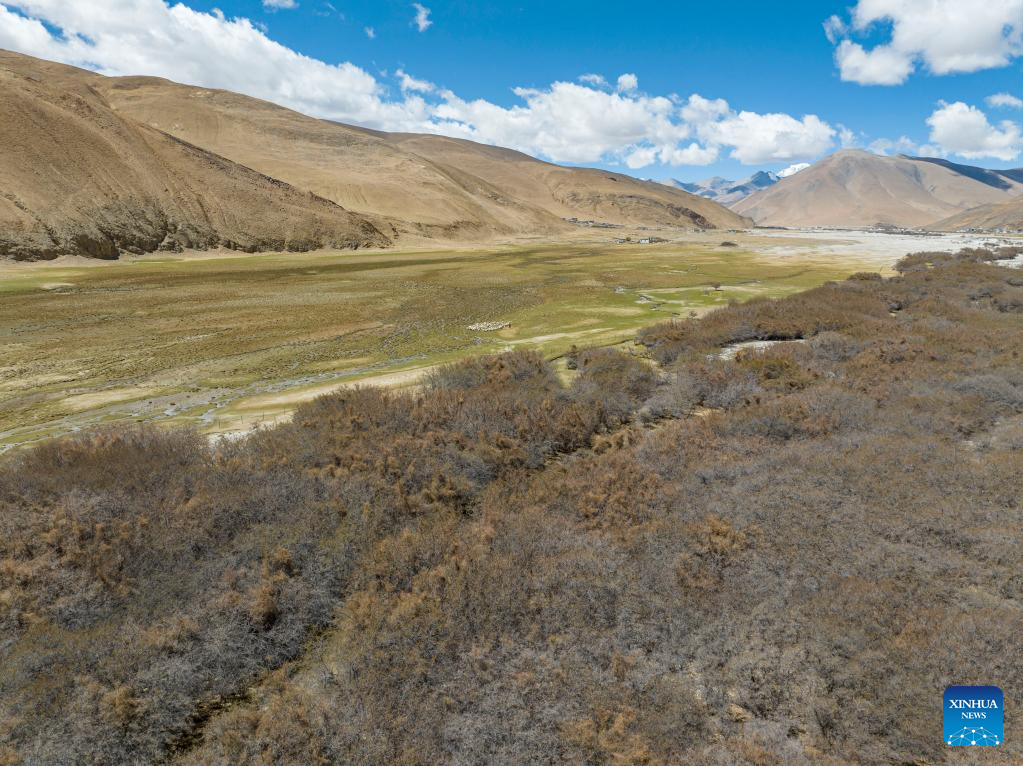
This aerial photo taken on May 25, 2023 shows a seabuckthorn forest and wetlands in Qomolangma National Nature Reserve, southwest China's Tibet Autonomous Region.
The ecology of the Mount Qomolangma region continues to improve, as China has made progress in ecological and environmental protection over the years, experts have said as scientific research on the world's highest peak continues. (Xinhua/Sun Fei)
LHASA, May 25 (Xinhua) -- The ecology of the Mount Qomolangma region continues to improve, as China has made progress in ecological and environmental protection over the years, experts have said as scientific research on the world's highest peak continues.
"Through the analysis of the snow samples from Mount Qomolangma, it is found that solid pollutants have little impact on the environment of the mountain," said Kang Shichang, a researcher at the Northwest Institute of Eco-Environment and Resources under the Chinese Academy of Sciences.
Kang said it is inevitable that glaciers will retreat globally as the climate warms. However, glaciers in the Mount Qomolangma region and on the Qinghai-Tibet Plateau have retreated more slowly than in other parts of the world.
An increase in the number of snow leopards -- a rare species under first-class state protection in China -- in the Qomolangma National Nature Reserve also reflects the healthy development of the ecosystem of the region, according to the forestry and grassland bureau of the Tibet Autonomous Region. Preliminary estimates put the population of snow leopards in the reserve area at more than 100.
Covering an approximate area of 33,800 square kilometers, the reserve is home to one of the world's most vulnerable ecosystems. Established in 1988, the reserve has protected well the representative ecosystems and natural environment in Tibet, including habitats for rare and endangered species, wetlands where birds migrate, and natural landscapes, geological relics and biological fossils.
The 2023 Mount Qomolangma expedition is part of the second comprehensive scientific expedition to the Qinghai-Tibet Plateau, which was initiated in 2017. Since the end of April, a total of 170 scientists have been conducting research on the water, ecology and human activities around the Mount Qomolangma region. ■
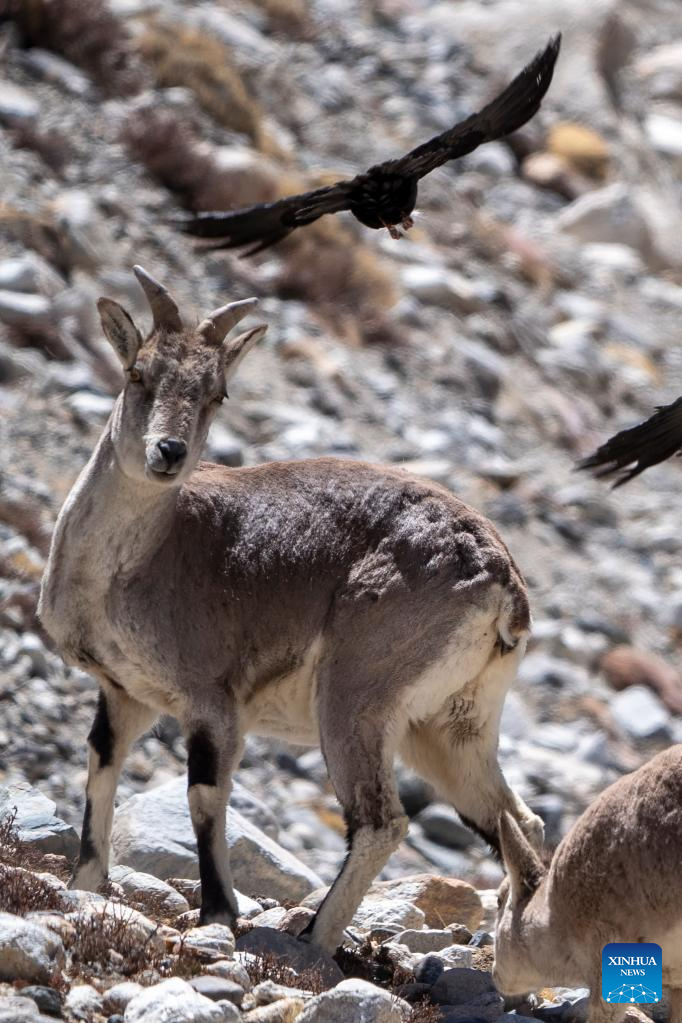
This photo taken on May 13, 2023 shows a blue sheep and a yellow-billed chough in Qomolangma National Nature Reserve, southwest China's Tibet Autonomous Region.
The ecology of the Mount Qomolangma region continues to improve, as China has made progress in ecological and environmental protection over the years, experts have said as scientific research on the world's highest peak continues. (Photo by Tenzin Norbu/Xinhua)

This photo taken on May 14, 2023 shows yellow-billed choughs at the foot of Mount Qomolangma in southwest China's Tibet Autonomous Region.
The ecology of the Mount Qomolangma region continues to improve, as China has made progress in ecological and environmental protection over the years, experts have said as scientific research on the world's highest peak continues. (Xinhua/Jigme Dorje)
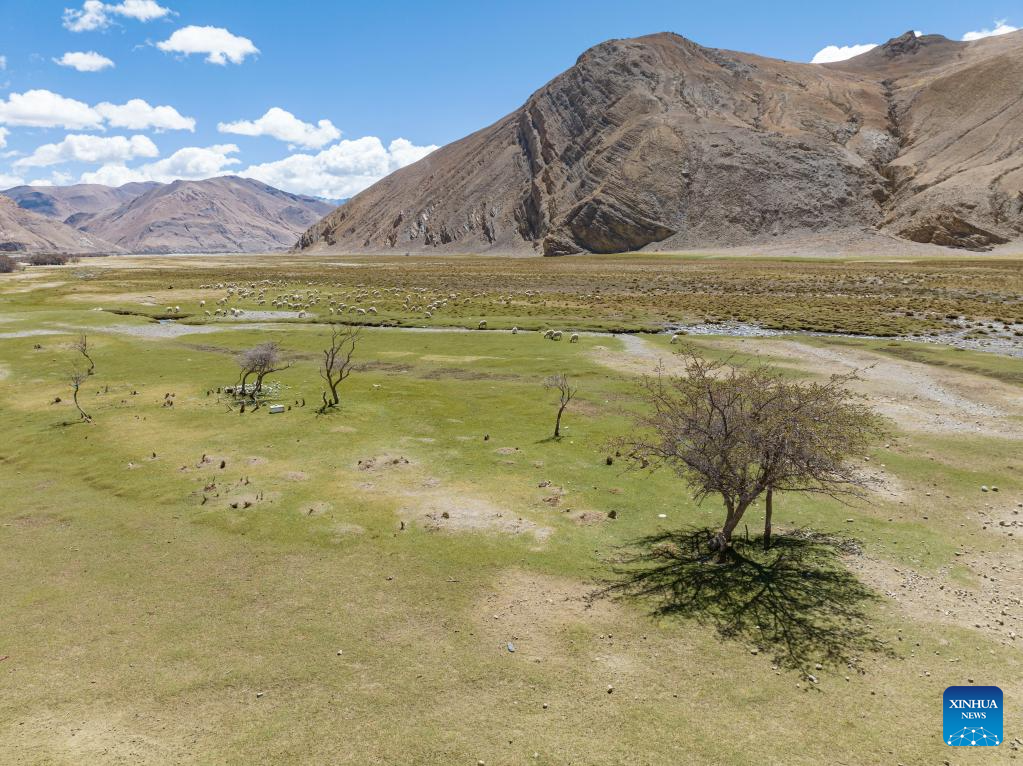
This aerial photo taken on May 25, 2023 shows wetlands in Qomolangma National Nature Reserve, southwest China's Tibet Autonomous Region.
The ecology of the Mount Qomolangma region continues to improve, as China has made progress in ecological and environmental protection over the years, experts have said as scientific research on the world's highest peak continues. (Xinhua/Sun Fei)
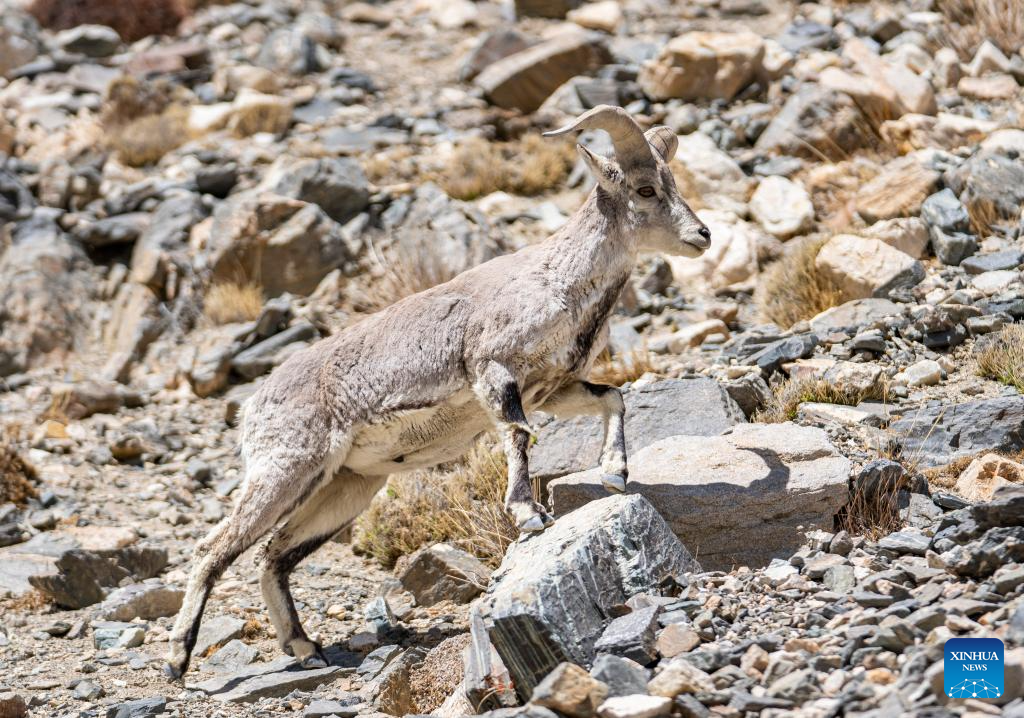
This photo taken on May 20, 2023 shows a blue sheep in Qomolangma National Nature Reserve, southwest China's Tibet Autonomous Region.
The ecology of the Mount Qomolangma region continues to improve, as China has made progress in ecological and environmental protection over the years, experts have said as scientific research on the world's highest peak continues. (Xinhua/Sun Fei)
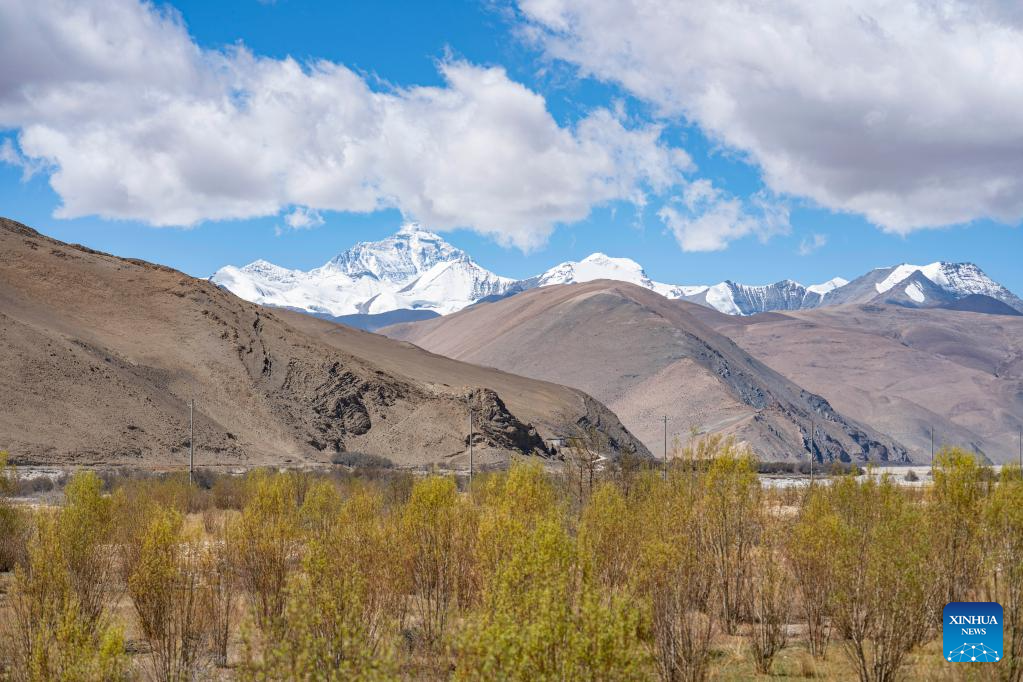
This photo taken on May 25, 2023 shows trees at the foot of Mount Qomolangma in southwest China's Tibet Autonomous Region.
The ecology of the Mount Qomolangma region continues to improve, as China has made progress in ecological and environmental protection over the years, experts have said as scientific research on the world's highest peak continues. (Xinhua/Sun Fei)
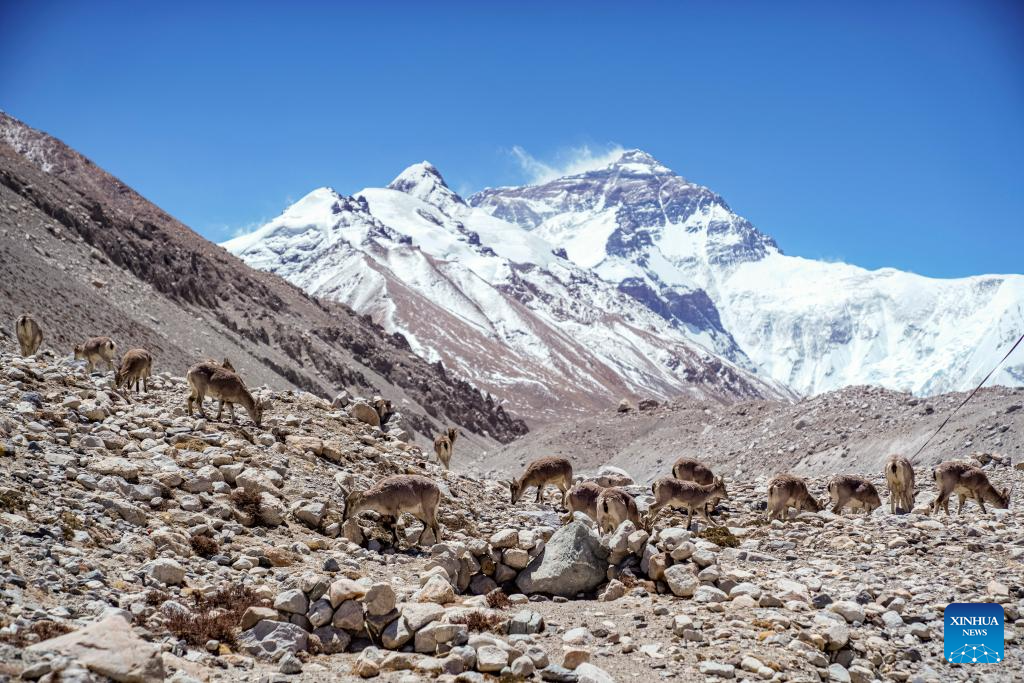
This photo taken on May 9, 2023 shows blue sheep at the foot of Mount Qomolangma in southwest China's Tibet Autonomous Region.
The ecology of the Mount Qomolangma region continues to improve, as China has made progress in ecological and environmental protection over the years, experts have said as scientific research on the world's highest peak continues. (Xinhua/Sun Fei)
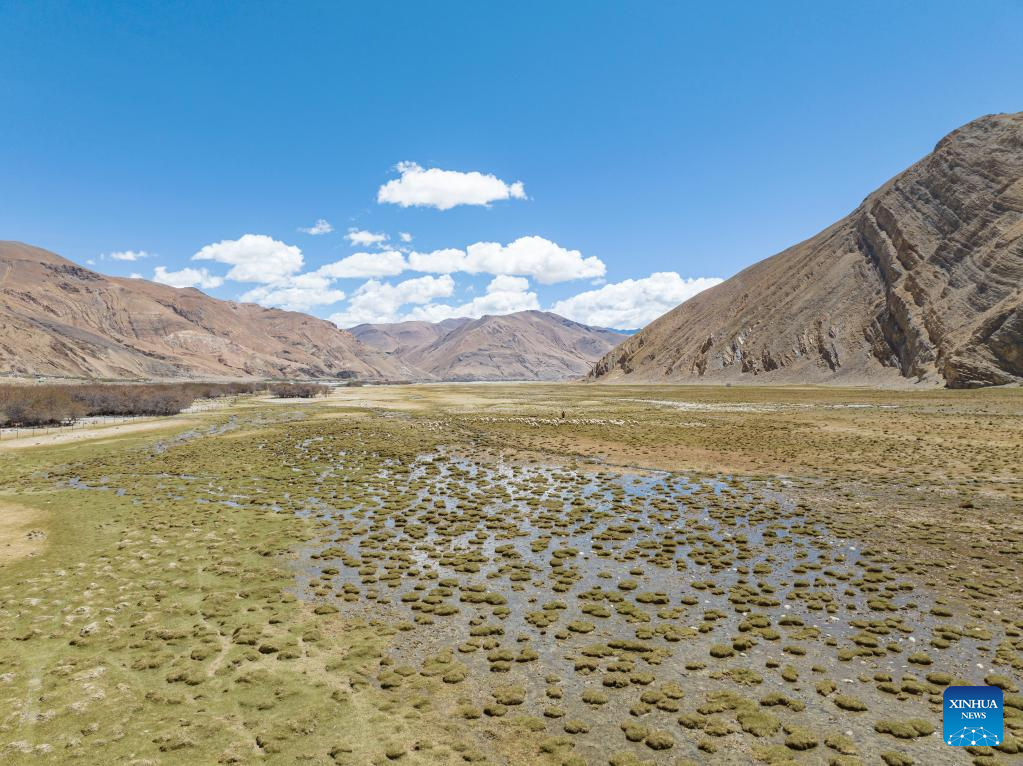
This aerial photo taken on May 25, 2023 shows wetlands in Qomolangma National Nature Reserve, southwest China's Tibet Autonomous Region.
The ecology of the Mount Qomolangma region continues to improve, as China has made progress in ecological and environmental protection over the years, experts have said as scientific research on the world's highest peak continues. (Xinhua/Sun Fei)
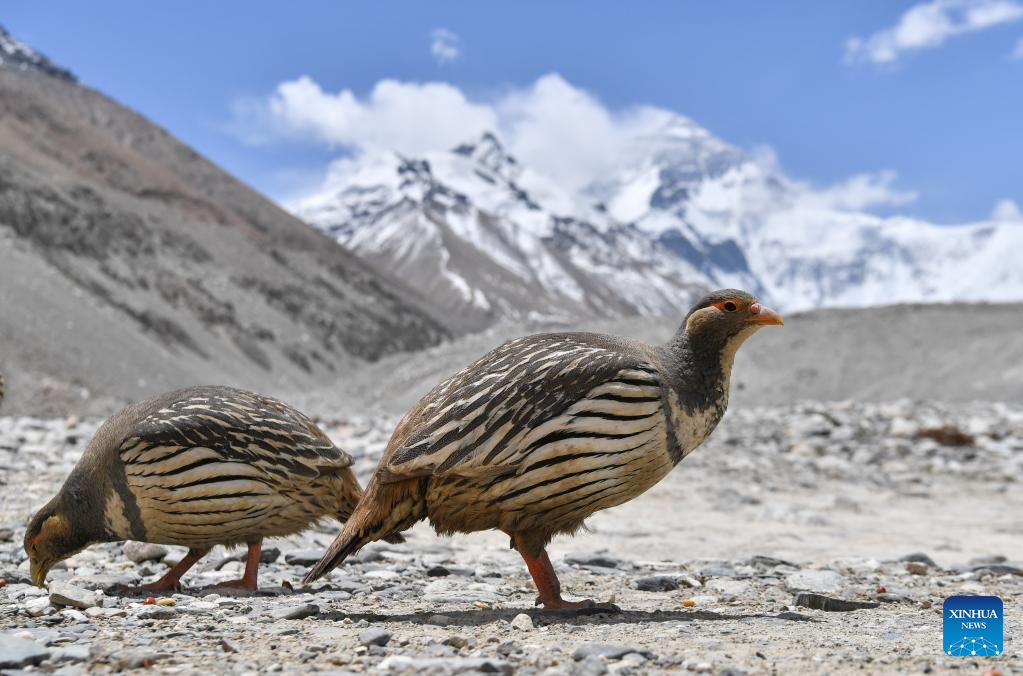
This photo taken on May 14, 2023 shows Tibetan snowcocks at the foot of Mount Qomolangma in southwest China's Tibet Autonomous Region.
The ecology of the Mount Qomolangma region continues to improve, as China has made progress in ecological and environmental protection over the years, experts have said as scientific research on the world's highest peak continues. (Xinhua/Jigme Dorje)
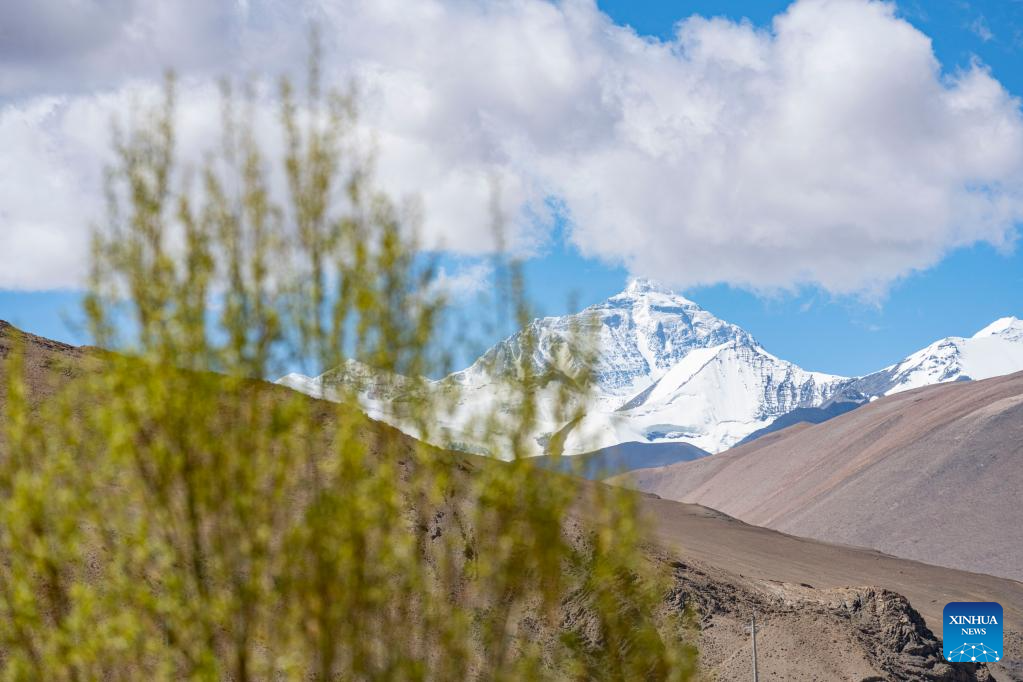
This photo taken on May 25, 2023 shows trees at the foot of Mount Qomolangma in southwest China's Tibet Autonomous Region.
The ecology of the Mount Qomolangma region continues to improve, as China has made progress in ecological and environmental protection over the years, experts have said as scientific research on the world's highest peak continues. (Xinhua/Sun Fei)
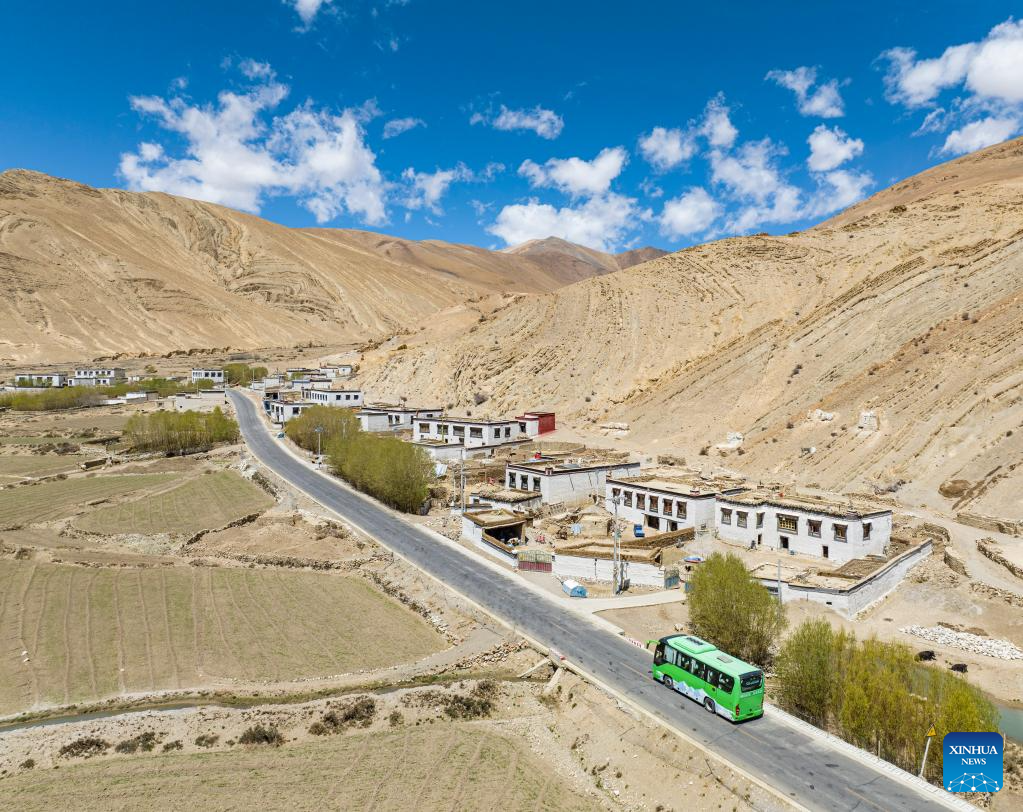
This aerial photo taken on May 25, 2023 shows an eco-friendly bus carrying tourists heading for Mount Qomolangma in southwest China's Tibet Autonomous Region.
The ecology of the Mount Qomolangma region continues to improve, as China has made progress in ecological and environmental protection over the years, experts have said as scientific research on the world's highest peak continues. (Xinhua/Sun Fei)
编辑:呼乐乐